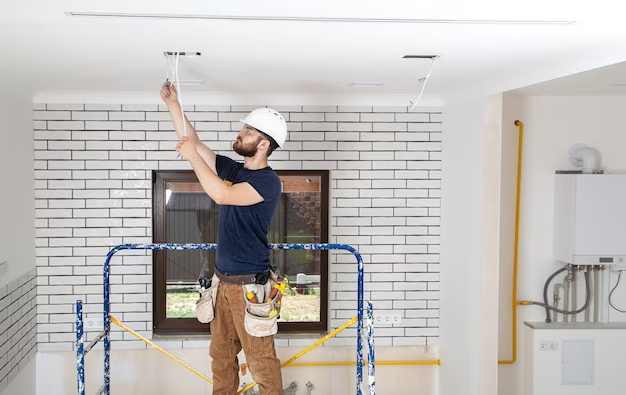After experiencing a fire, rebuilding your home might seem like a challenge. The emotional impact combined with considerations can leave you feeling overwhelmed.
Have no fear; with guidance and an effective plan you can navigate the rebuilding process and turn this tragedy into an opportunity.
This article’s goal is to offer tips and insights that can assist in rebuilding after fire has destroyed your home, offering a roadmap towards recovery.
1. Assessing the Damage
Before embarking on any rebuilding efforts it’s crucial to assess the damage. Hiring professionals such as fire investigators or structural engineers would help provide accurate assessments on what remains.
An assessment will give you an in-depth knowledge of your loss, helping determine its scale and scale of reconstruction work necessary. Furthermore, this process provides crucial documentation supporting insurance claims.
2. Engaging with Insurance Companies
Dealing with insurance companies can be complex and frustrating at times. Start by reviewing your policy to understand its coverage and any limitations, then inform them immediately of an incident that requires their intervention.
Keep track of all communication with them. To support your claim, create an inventory of damaged items along with photographs and receipts.
Consider the option of hiring an adjuster if necessary. They can play a role in negotiating a settlement and making sure you receive the highest possible compensation for your loss.
3. Clearing Debris
After completing the assessments and initiating insurance procedures the next important step is to clear away the debris. It is advisable to hire professionals who specialize in debris removal to ensure an efficient process.
This step is crucial not for safety but to create space for the construction phase. It would be wise to salvage any items that may have survived the fire as they could hold value and contribute positively towards a new beginning.
4. Collaborating with Fire Restoration Company
When it comes to rebuilding your home, it’s important to Work With Fire Restoration Company in Chicago Heights who possess the skills, experience, and dedication needed to navigate the complexities of post-fire recovery.
Consider incorporating fire materials and designs into your home renovation to minimize the chances of incidents. It’s crucial to ensure that the plan adheres to building codes and regulations so that you can avoid any setbacks during the construction process.
5. Securing Permits
Before starting any construction work make sure you obtain all the permits from the authorities. Understanding and complying with building codes is vital for a rebuilding process.
Engage in discussions with your architect and contractor to ensure that all required permits are obtained, addressing any concerns or modifications needed to meet regulations. Taking this approach will help prevent delays and complications during construction.
6. Budgeting Wisely
Rebuilding after a fire requires planning. It’s important to develop a budget that takes into account construction costs, materials, labor, well as potential unexpected expenses.
Take into consideration any insurance payouts you may receive and explore financing options if necessary.
Regularly. Adjust your budget as the project progresses, keeping an eye on costs so that you don’t exceed your financial capabilities. Properly managing your budget is crucial, for ensuring a stress free rebuilding experience.
7. Salvaging and Rebuilding Sentimental Items
Although certain belongings may be irretrievable there are ways to save and incorporate them into the design. Collaborate with experts in restoration to evaluate the harm caused to items like photographs, heirlooms and furniture.
Some of these items might be salvageable through cleaning and restoration methods allowing for a sense of consistency and a link to the past. By integrating these elements into the home it adds value and significance.
8. Designing for Resilience
When rebuilding your home after a fire it’s important to learn from the past and take measures to ensure resilience. Collaborate with architects and contractors to incorporate fire materials and features into your redesigned home.
This might involve using fire roofing, siding and windows as well as creating defensible space around your property. By investing in these measures you not only enhance safety but also decrease the likelihood of future fire related damages.
9. Emotional Support
Dealing with the aftermath of a fire involves more than aspects; it is an emotional journey as well. It can be mentally exhausting so prioritizing your health is crucial.
Seek support, from friends, family members or professional counselors who can offer guidance and understanding during this time.
Connecting with support groups comprising individuals who have gone through tragedies can provide a sense of community. Shared strength.
10. Celebrating the New Beginning
As the reconstruction process nears its completion take a moment to reflect on the journey and acknowledge the resilience you’ve demonstrated throughout.
Once your home is rebuilt consider celebrating this beginning by hosting a housewarming gathering. Invite friends, family members and the professionals involved in the reconstruction process.
This symbolic event not marks the end of a chapter but also signifies the strength and determination it took to rise above adversity.
Conclusion
Reconstructing your home after a fire is definitely a task. However with planning, working closely with experts and having a mindset it can become a truly transformative journey.
By implementing these suggestions you can successfully navigate the process of rebuilding, transforming adversity into an opportunity for rejuvenation. The end result will be a home that stands even stronger and safer than before.
